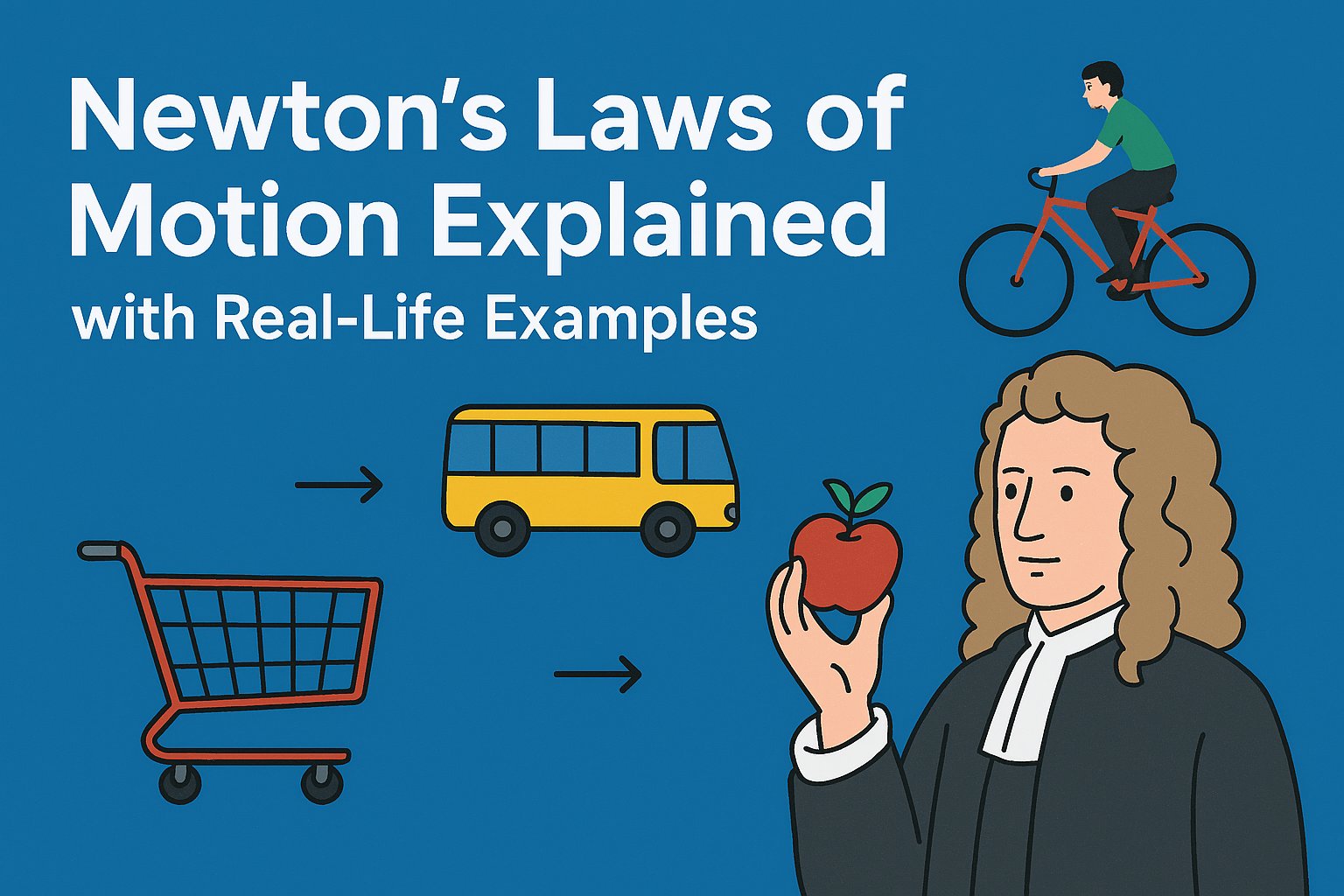Mechanics in Everyday Life — by WeLovePhysics
Excerpt: Learn what motion is, why it matters, and see Newton’s three laws come alive with relatable, daily-life examples you can observe today.
What is Motion in Physics?
Motion is a change in position with time, measured relative to a chosen reference frame. Key ideas include:
- Distance vs. displacement
- Speed vs. velocity
- Acceleration (speeding up, slowing down, or turning)
Why Learning Mechanics Matters in Daily Life
- Everyday safety and design: helmets, seatbelts, brakes, speed limits.
- Better decision-making: driving, cycling, crossing roads, using elevators.
- Foundation for engineering, robotics, sports science, aviation, and space.
- Builds powerful problem-solving habits useful in all areas of life.
Why Newton’s Laws of Motion Were Needed
Before Newton, many believed that a constant force was needed to keep objects moving. Experiments proved otherwise: without resistance (like friction), objects keep moving by themselves. Newton summarized these findings into three fundamental laws of motion that explain almost all everyday mechanics.
Newton’s First Law of Motion (Inertia) with Examples
If no net force acts, an object stays at rest or moves at constant speed in a straight line. This is called inertia—the resistance to changes in motion.
Everyday examples of inertia:
- When a bus starts or stops suddenly, passengers lurch forward or backward.
- A phone sliding on a car seat during sharp turns.
Try this experiment: Place a card on a glass with a coin on top. Flick the card quickly—the coin falls straight into the glass, proving inertia.
Newton’s Second Law of Motion (F = m × a) Explained Simply
Acceleration depends on two factors: the net force and the object’s mass.
- More force → greater acceleration.
- More mass → less acceleration for the same force.
Daily-life examples of F = m × a:
- Pushing an empty grocery cart vs. a full one.
- A small car accelerates faster than a heavily loaded truck.
Newton’s Third Law of Motion (Action–Reaction) with Real Examples
For every action, there is an equal and opposite reaction—forces always come in pairs.
Action–reaction examples in everyday life:
- Walking: your feet push backward on the ground; the ground pushes you forward.
- Balloons and rockets: air pushes out one way, motion occurs the opposite way.
Friction in Daily Life — The Invisible Force
Friction resists motion between surfaces. It allows walking, braking, and grip, while also slowing down moving objects.
Examples of friction:
- Walking on rough ground vs. slipping on ice.
- Sliding a book on wood vs. glass.
- Car brakes relying on friction to stop safely.
Observe Newton’s Laws of Motion Around You
Here are some simple activities to notice mechanics in action:
- Feel the forward lurch when a bus brakes (inertia).
- Compare pushing an empty vs. full suitcase (F = m × a).
- Push against a wall—you feel it push back (action–reaction).
- Slide a book on different surfaces (friction).
- Ride a swing and test timing of pushes (energy transfer).
Watch Newton’s Laws of Motion in Action
Want to see physics explained visually? Watch this short video that demonstrates all three laws:
Mini FAQ on Newton’s Laws
Do Newton’s laws always work?
Yes, they are accurate for everyday motion. At very high speeds or at the atomic scale, advanced theories like relativity and quantum mechanics are needed.
Why do cars need seatbelts?
In sudden stops, inertia keeps passengers moving forward. Seatbelts apply the stopping force safely.
Conclusion
Newton’s laws of motion explain how forces and motion work in everyday life—from buses and bicycles to rockets and seatbelts. These laws are the foundation of mechanics and continue to guide science, engineering, and technology.
If you enjoyed this post, share it with friends and follow WeLovePhysics for more relatable physics lessons.
